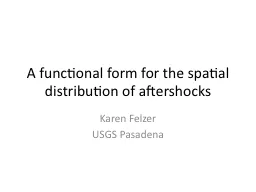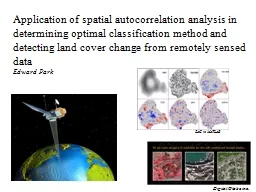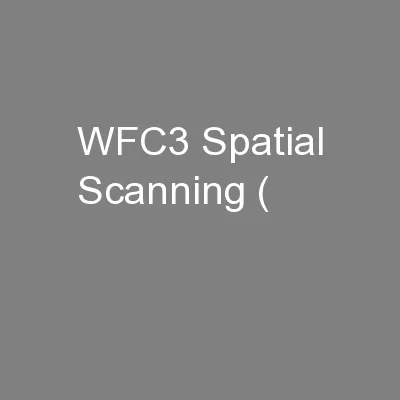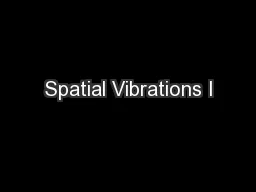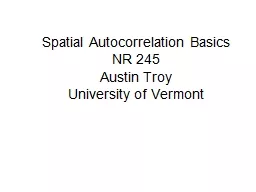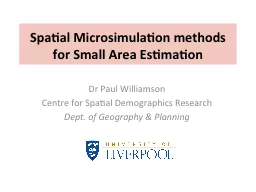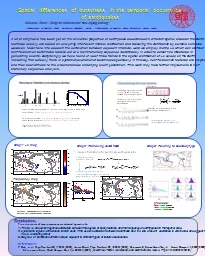PPT-A functional form for the spatial distribution of aftershoc
Author : min-jolicoeur | Published Date : 2015-10-15
Karen Felzer USGS Pasadena Summary Aftershock density decays with distance r from the mainshock surface as r n where n 13 25 and may vary for different
Presentation Embed Code
Download Presentation
Download Presentation The PPT/PDF document "A functional form for the spatial distri..." is the property of its rightful owner. Permission is granted to download and print the materials on this website for personal, non-commercial use only, and to display it on your personal computer provided you do not modify the materials and that you retain all copyright notices contained in the materials. By downloading content from our website, you accept the terms of this agreement.
A functional form for the spatial distribution of aftershoc: Transcript
Download Rules Of Document
"A functional form for the spatial distribution of aftershoc"The content belongs to its owner. You may download and print it for personal use, without modification, and keep all copyright notices. By downloading, you agree to these terms.
Related Documents

